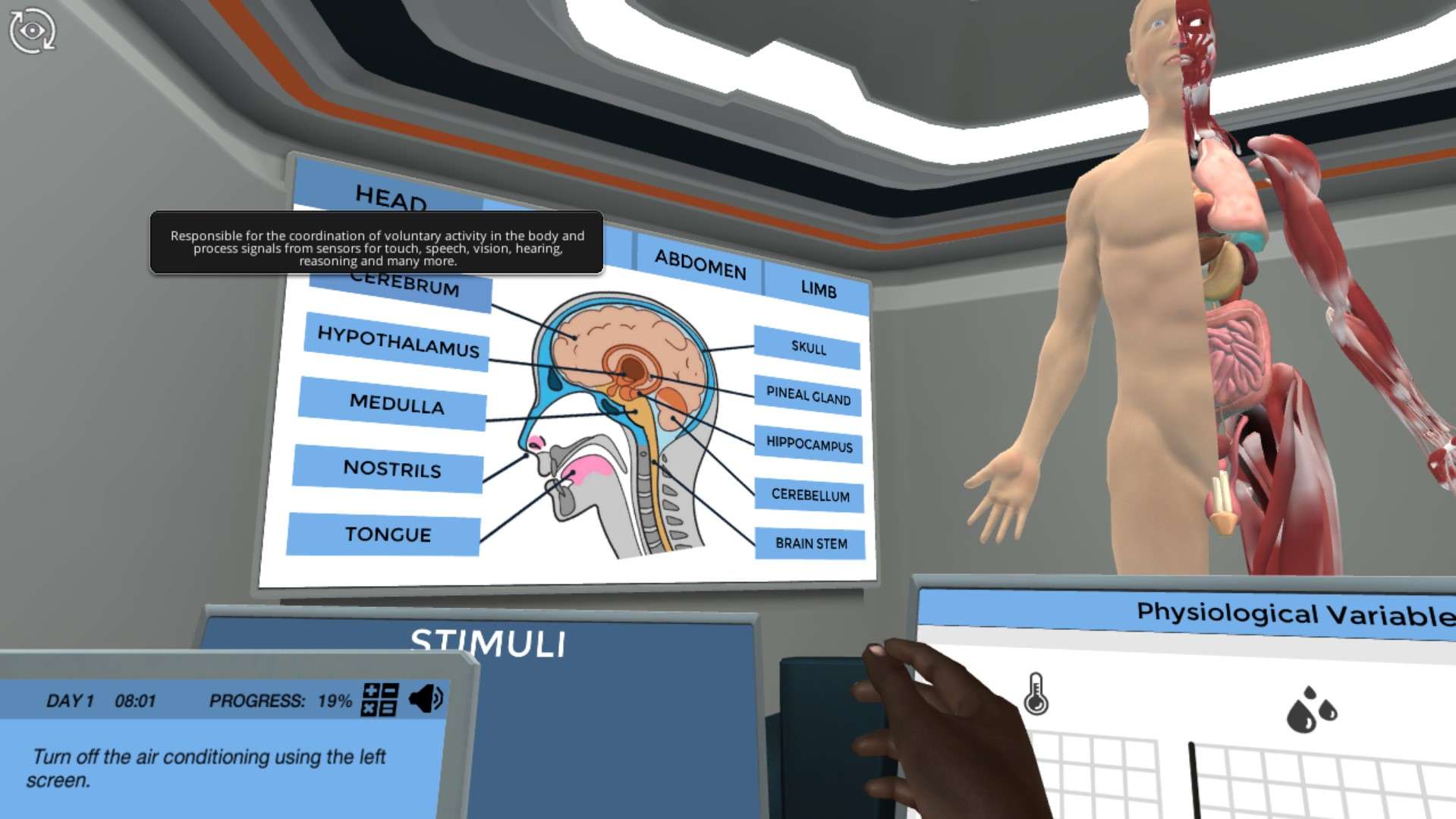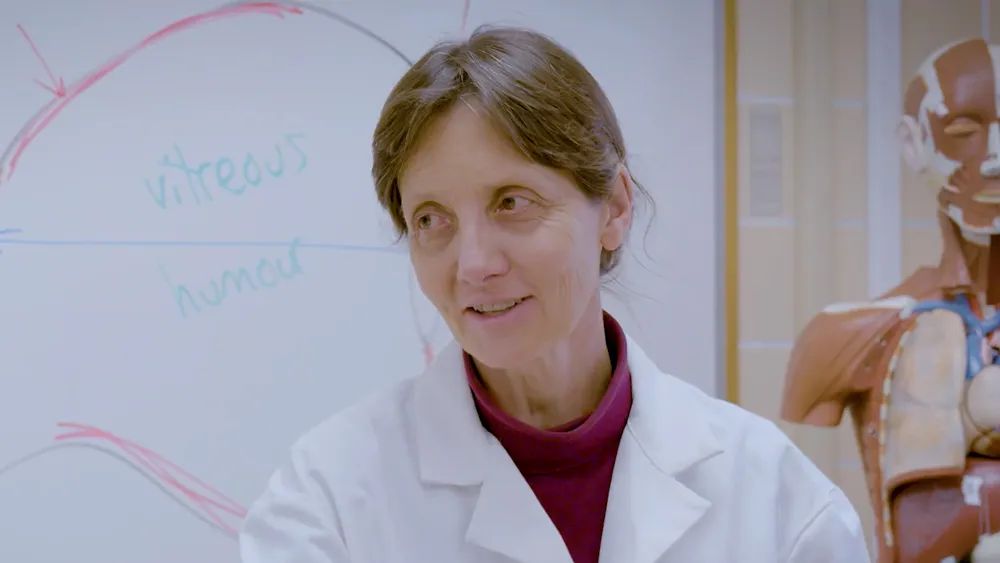Heading 1
Heading 2
Heading 3
Heading 4
Heading 5
Heading 6
Lorem ipsum dolor sit amet, consectetur adipiscing elit, sed do eiusmod tempor incididunt ut labore et dolore magna aliqua. Ut enim ad minim veniam, quis nostrud exercitation ullamco laboris nisi ut aliquip ex ea commodo consequat. Duis aute irure dolor in reprehenderit in voluptate velit esse cillum dolore eu fugiat nulla pariatur.
Block quote
Ordered list
- Item 1
- Item 2
- Item 3
Unordered list
- Item A
- Item B
- Item C
Bold text
Emphasis
Superscript
Subscript
About This Simulation
Ever wondered how your body constantly regulates itself to stay healthy? Visit the Homeostatic Control lab to learn all about the concept of homeostasis and how it can be applied to a wide range of systems, from blood pressure to body temperature.
Learning Objectives
- List some of the main physiological variables under homeostatic control
- Employ appropriate vocabulary to discuss the processes and concepts of homeostasis
- Explain the steps in a homeostatic pathway from stimulus to response
- Compare different types of feedback loops
- Identify signs of homeostatic disruption and determine the underlying mechanism
About This Simulation
Lab Techniques
Related Standards
- HS-LS1-3
- Alignment pending
- Alignment pending
Learn More About This Simulation
The human body is a very complex combination of finely-tuned machinery. So how does it constantly keep everything in balance? In this simulation, you will learn about the basic workflow behind the homeostatic process, through the examples of body temperature, blood pressure and blood sugar regulation.
Observe homeostasis in action
Test different settings on our virtual volunteer, Phineas: switch the air conditioning on and off, have him practice different intensities of workout and feed him some yummy sugary snacks, all while observing how his body reacts to all these different stimuli. From your observations, you will have to find the sensors detecting the stimuli, the control center processing them and the effectors acting to counter them on Phineas’ body. You will also analyze the impact of the stimuli on essential physiological variables such as blood pressure, heart rate, body temperature and more.
Identify the actors in homeostatic regulation pathways
Using a 3D model of a human body, apply the basic model of homeostasis by identifying the sensors, control center and effectors for three different regulation pathways: body temperature, blood pressure and blood sugar. You will be able to control different stimuli to apply one or more at a time on the test subject, with an immediate visible impact on physiological variables. Finally, you will have to interpret the resulting changes in those variables to explain the homeostatic phenomenon.
Keep the test subject’s body in balance
Through the study of body temperature, blood pressure and blood sugar regulation, will you be able to prevent the body from going into shock and maintain a healthy balance?
For Science Programs Providing a Learning Advantage
Boost STEM Pass Rates
Boost Learning with Fun
75% of students show high engagement and improved grades with Labster
Discover Simulations That Match Your Syllabus
Easily bolster your learning objectives with relevant, interactive content
Place Students in the Shoes of Real Scientists
Practice a lab procedure or visualize theory through narrative-driven scenarios


FAQs
Find answers to frequently asked questions.
Heading 1
Heading 2
Heading 3
Heading 4
Heading 5
Heading 6
Lorem ipsum dolor sit amet, consectetur adipiscing elit, sed do eiusmod tempor incididunt ut labore et dolore magna aliqua. Ut enim ad minim veniam, quis nostrud exercitation ullamco laboris nisi ut aliquip ex ea commodo consequat. Duis aute irure dolor in reprehenderit in voluptate velit esse cillum dolore eu fugiat nulla pariatur.
Block quote
Ordered list
- Item 1
- Item 2
- Item 3
Unordered list
- Item A
- Item B
- Item C
Bold text
Emphasis
Superscript
Subscript
A Labster virtual lab is an interactive, multimedia assignment that students access right from their computers. Many Labster virtual labs prepare students for success in college by introducing foundational knowledge using multimedia visualizations that make it easier to understand complex concepts. Other Labster virtual labs prepare learners for careers in STEM labs by giving them realistic practice on lab techniques and procedures.
Labster’s virtual lab simulations are created by scientists and designed to maximize engagement and interactivity. Unlike watching a video or reading a textbook, Labster virtual labs are interactive. To make progress, students must think critically and solve a real-world problem. We believe that learning by doing makes STEM stick.
Yes, Labster is compatible with all major LMS (Learning Management Systems) including Blackboard, Canvas, D2L, Moodle, and many others. Students can access Labster like any other assignment. If your institution does not choose an LMS integration, students will log into Labster’s Course Manager once they have an account created. Your institution will decide which is the best access method.
Labster is available for purchase by instructors, faculty, and administrators at education institutions. Purchasing our starter package, Labster Explorer, can be done using a credit card if you are located in the USA, Canada, or Mexico. If you are outside of North America or are choosing a higher plan, please speak with a Labster sales representative. Compare plans.
Labster supports a wide range of STEM courses at the high school, college, and university level across fields in biology, chemistry, physics, and health sciences. You can identify topics for your courses by searching our Content Catalog.
















